By Dan Weisz
While our house was being painted, we spent a few nights at my brother and sister-in-law’s house near the Catalina Highway. Their backyard hosts a nice assortment of desert birds. Although it was cold and windy, I was able to shoot a few of the birds I enjoyed seeing. The hummingbird feeders brought in Anna’s, Costas and Broad-billed Hummingbirds. The Broad-bills were the only ones to stick around long enough for photos! I hoped to get some shots of them perched on the tips of the agave cactus and was successful!
Here is a backlit male Broad-billed Hummingbird.
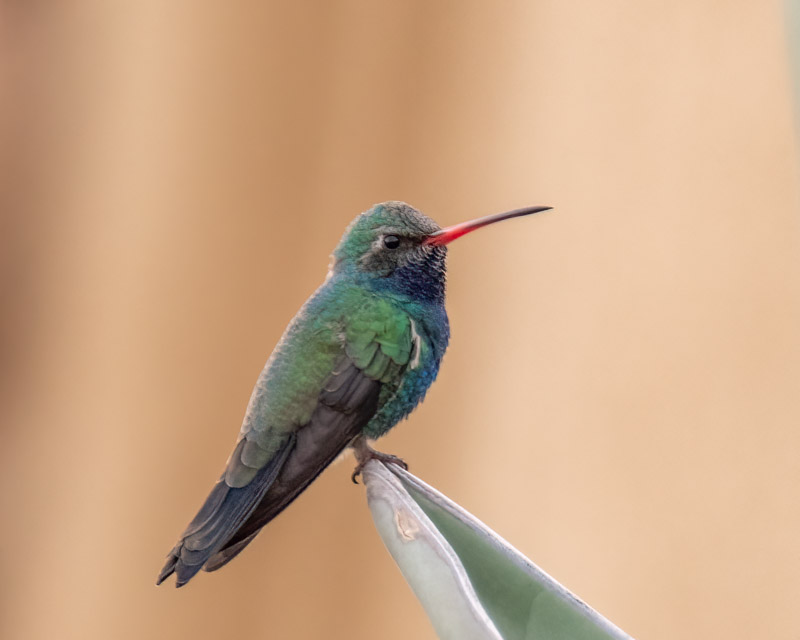
A female Broad-billed was hunkered down in the cold. When she feeds, she is all stretched out but not when she is just perched.
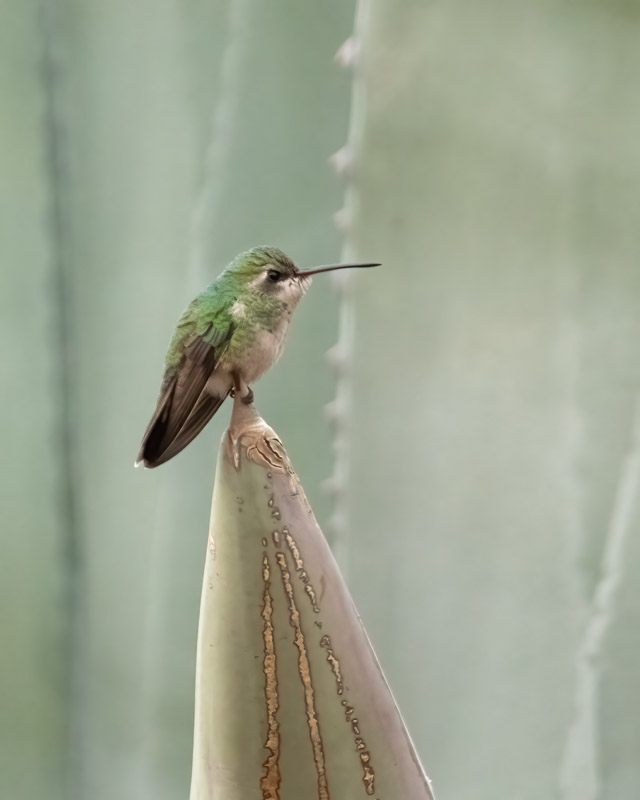
This photo was taken through a double-pane window looking into the sun while the hummingbird was sitting on a feeder. Ever wonder how the Broad-billed Hummingbird got its name? Not from the distinctive brilliant blue color!!
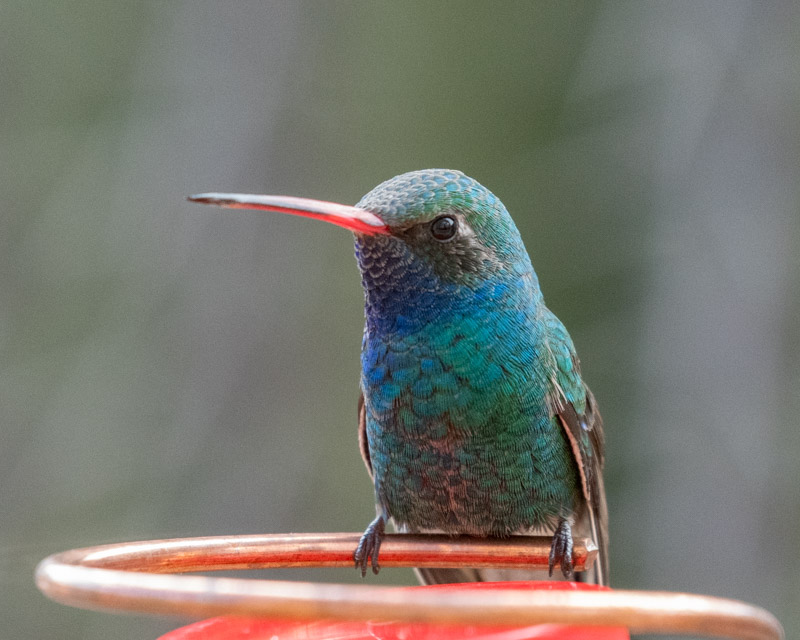
It’s name comes from its very broad bill.
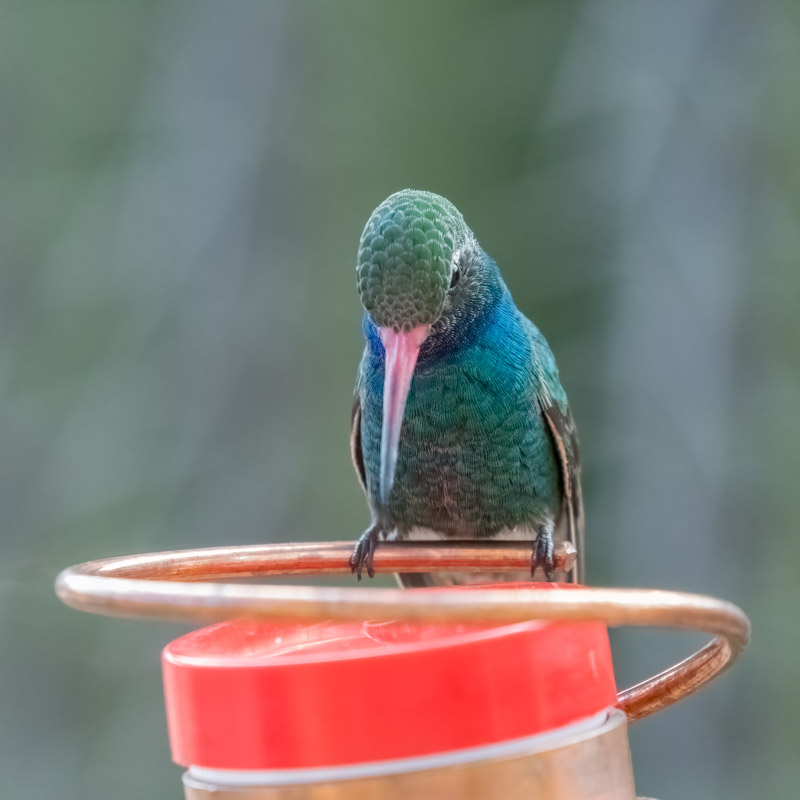
The female Broad-billed Hummingbird had a favorite perch spot in a lemon tree. She returned to this same spot faithfully and consistently. She is hunkered down in the cold air and all fluffed out in order to retain body heat and stay warm.
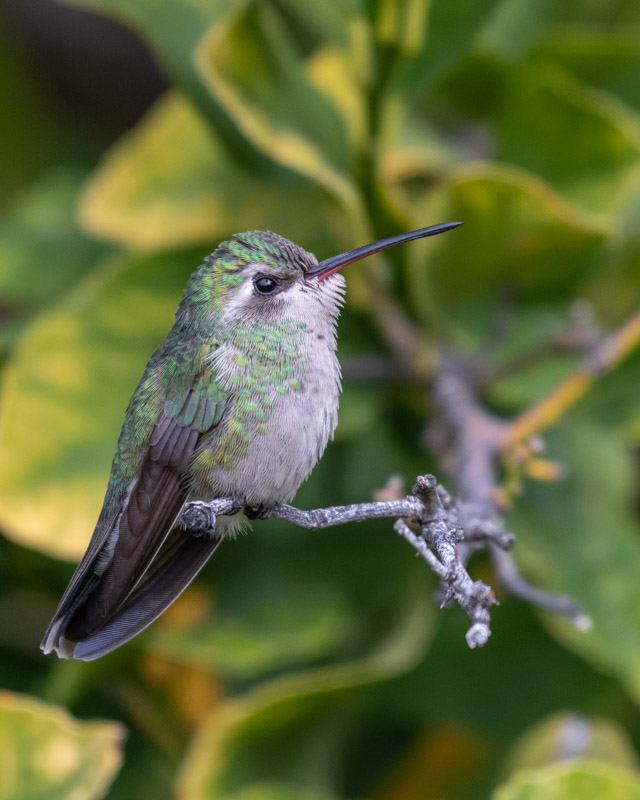
A close up of the photo above shows how much her delicate feathers are fluffed out. She looks like she has chin whiskers! (You can easily see the orange underside of her beak here.)
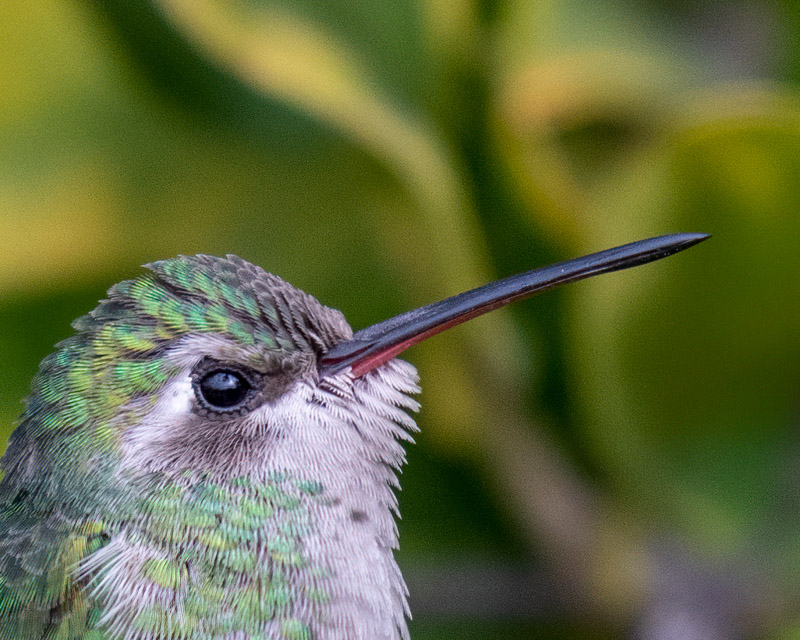
The hummingbird was certainly aware of me and she stretched out to get a better look at me. (After sharing these photos with others, I learned that this is not a female Broad-billed Hummingbird. Sheri Williamson, the author of A Field Guide to Hummingbirds of North America, affirmed that this bird was a hybrid bird, a cross between a Costa’s Hummingbird and a Broad-billed Hummingbird. Sheri stated “Based on the side view, hybrid origin seems likely. Though female Broad-billeds can be quite white below, this bird’s big head, puffy chin, and medium-length, thin, nearly straight bill are all suggestive of Costa’s influence.”
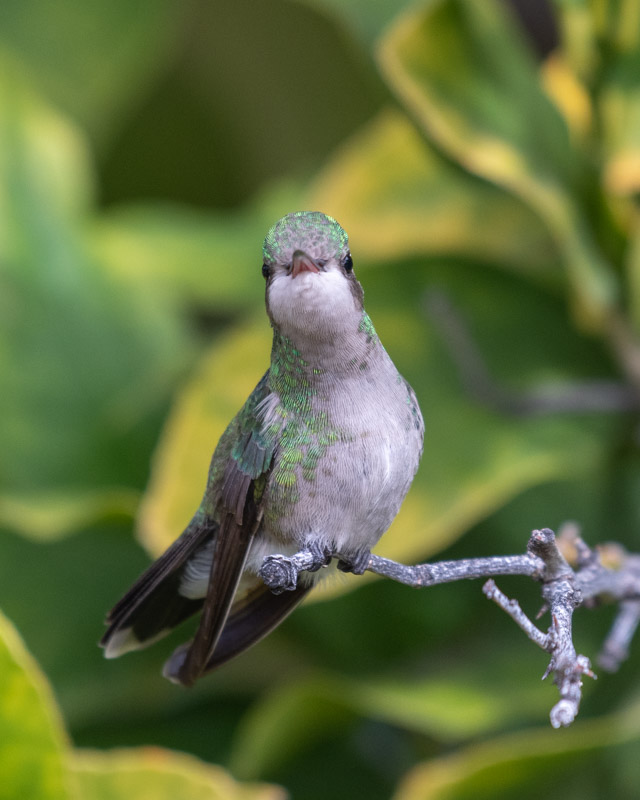
The Northern Mockingbird was atop a lookout on this cold and windy, overcast morning.
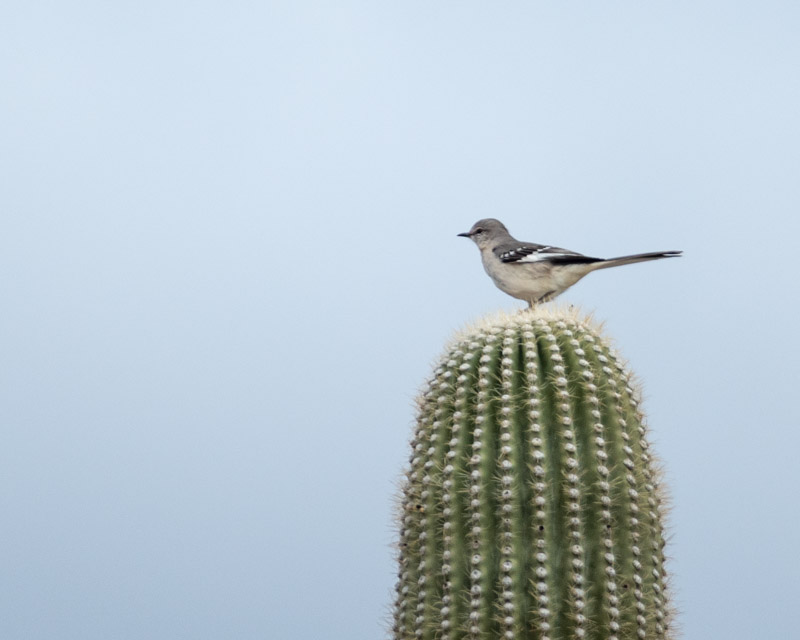
The seed block attracted many birds including this Gambel’s Quail. Looks like he is missing a few of the six feathers in his top knot.
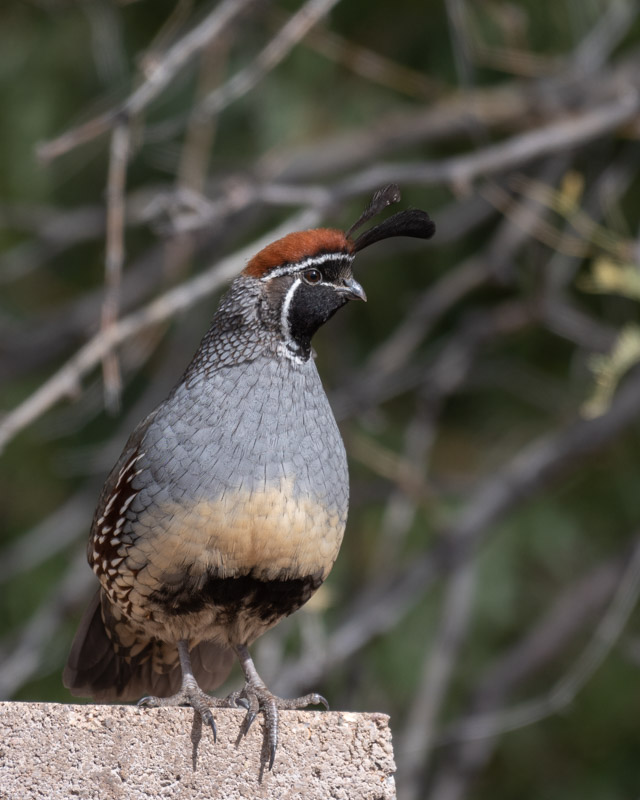
This hungry quail got right to work.
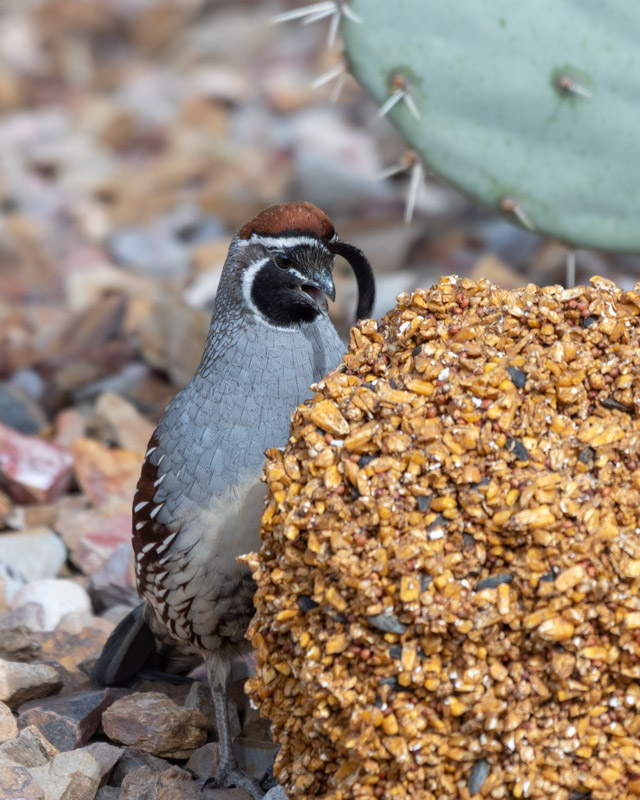
The female Gambel’s Quail hopped on the fence, took a look at me to figure out whether I was friend or foe, and then hopped down to the seed block for a snack. The wind was blowing her neck feathers as she stretched up to take a look.
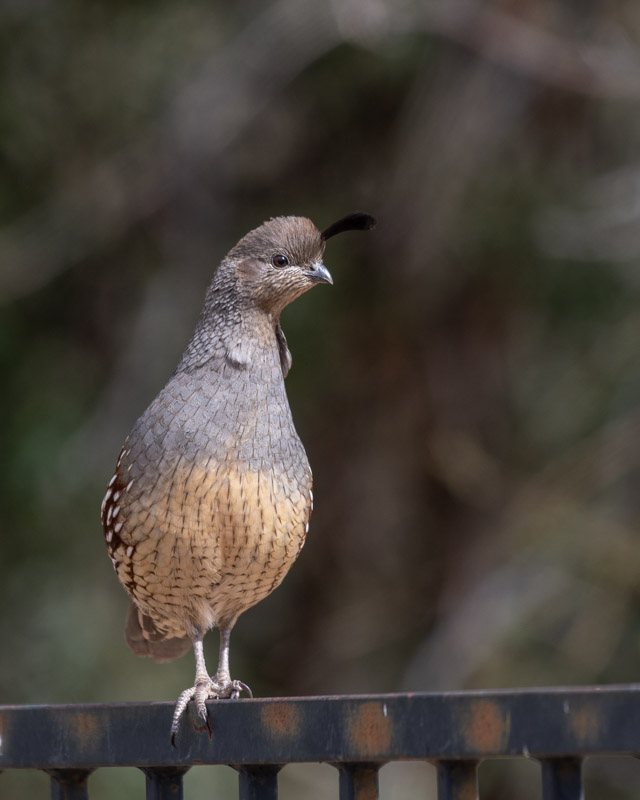
It was nice to see a Northern Cardinal coming in for sunflower seeds and to feed on the suet cake.
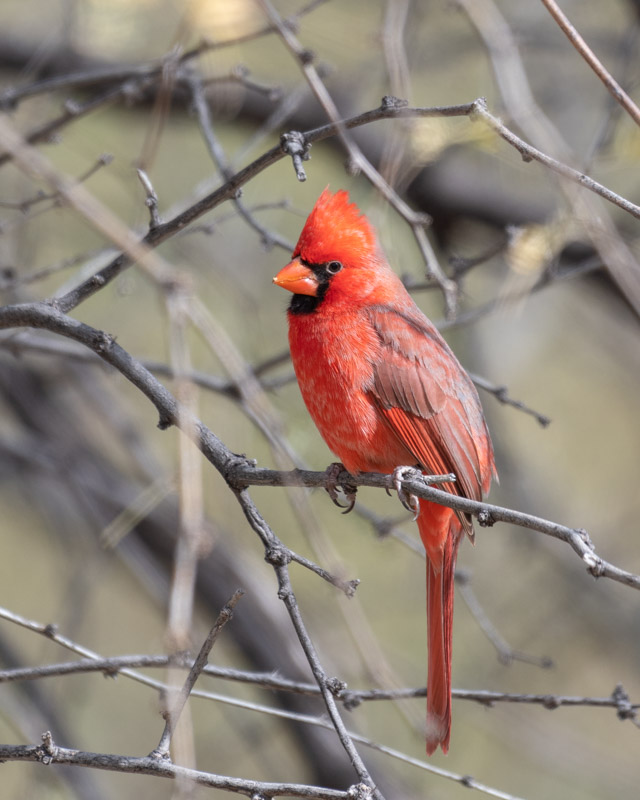
The wind was very strong. At times, it was strong enough to push the Cardinal’s crest down flat on its head. The Cardinal looks very strange without his crest!
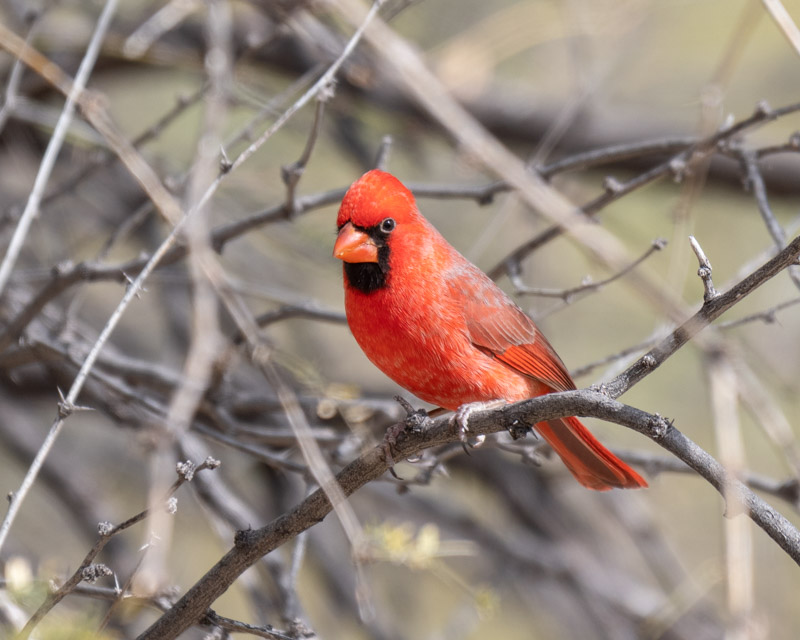
With his back turned, the wind pushed the crest in the other direction. The Cardinal’s tail is also being blown by the wind as the bird held on tightly.
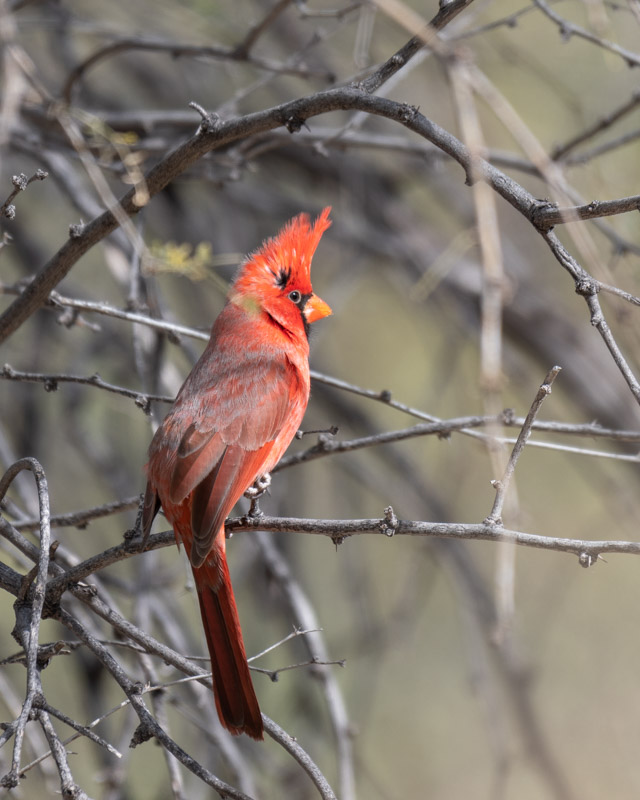
I thought the Cardinal’s crest might just go flying off in the wind. I had a good grip on my own hat so it wouldn’t blow off.
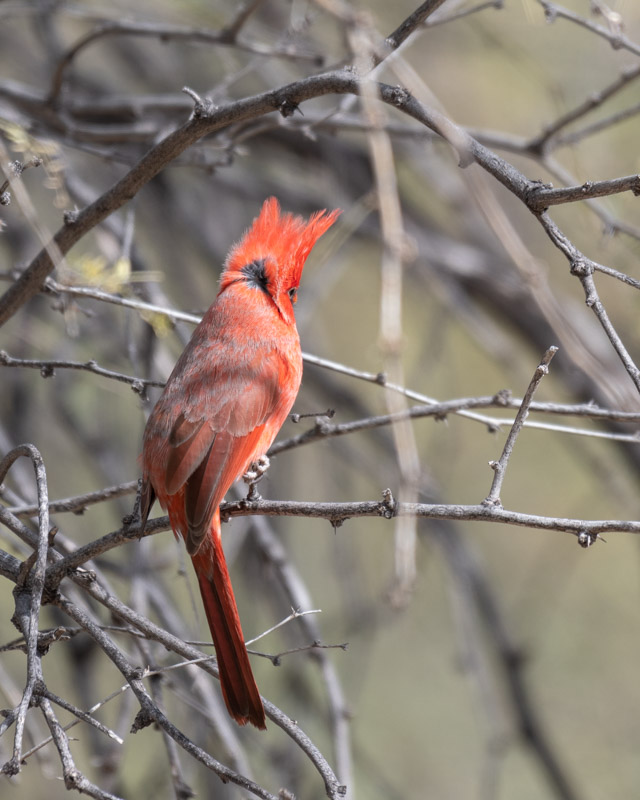
You’ve heard the phrase “in a blink of an eye”. Sources state that a blink lasts perhaps 1/10th of a second. My camera’s shutter speed was set at 1/640th of a second which is a decent speed for the perched and sitting-still birds I was shooting. When this Cardinal flew, 1/640 was clearly way too slow to stop the action resulting in a very blurry shot. I wasn’t ready for a flight shot. Still, I think the spread tail of the Cardinal is worth a look, don’t you? And it all happened much more quickly than the blink of an eye.
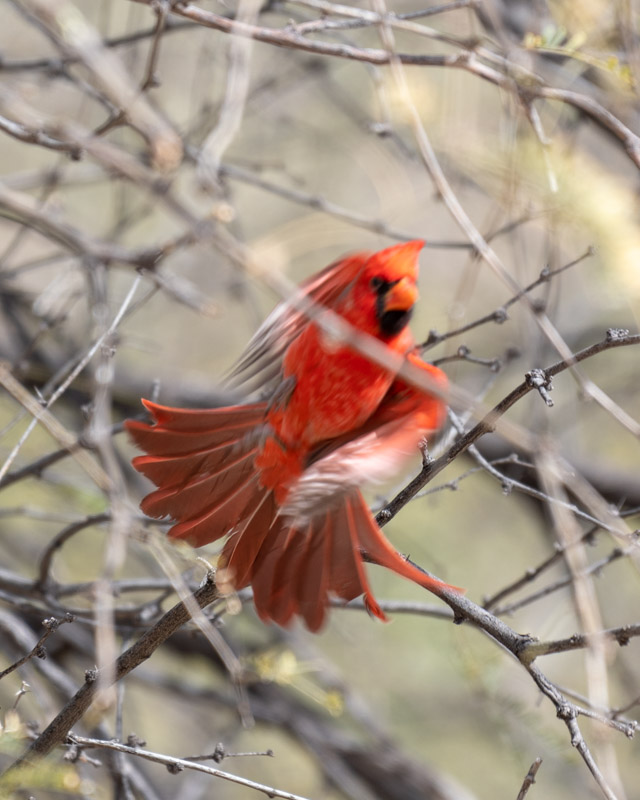
What a pretty backyard!
